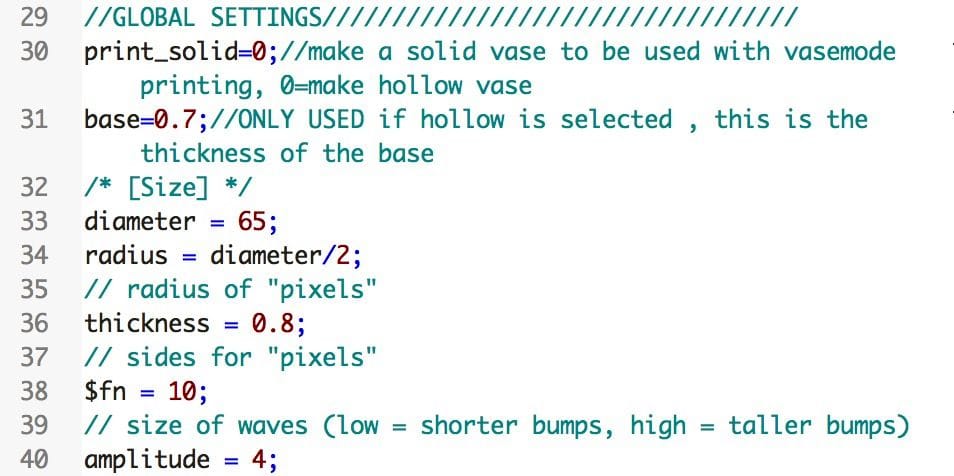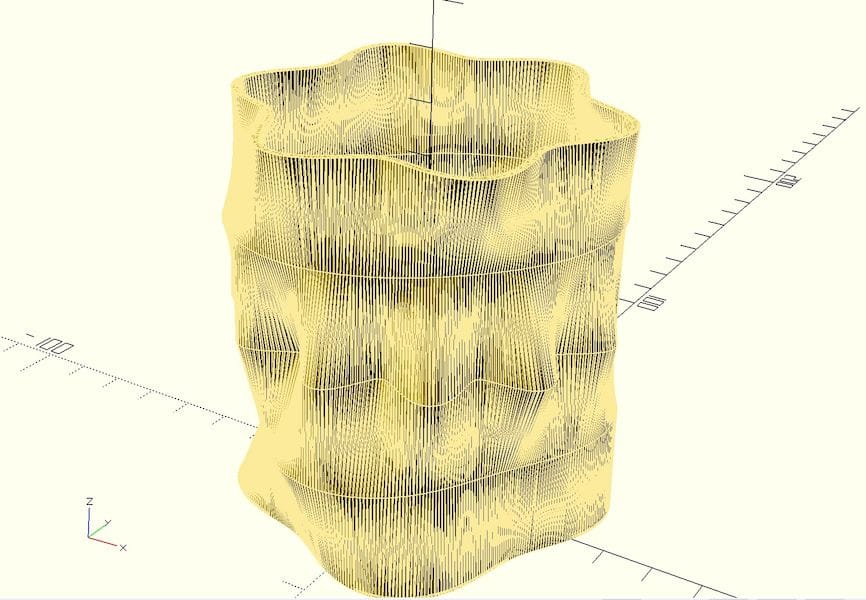
This week’s selection is the easy-to-use Sinewave Vase Generator by YouMagine contributor Peetersm.
Michigan-based Peetersm has produced a system that’s capable of generating a wide variety of unusual vase shapes. But it’s a little bit tricky to use it.
This week’s choice is actually not a 3D model per se, but rather is a tool that can generate them mathematically. So it’s really an infinite set of 3D vase models.
The results are often very nice, with highly printable 3D models of varying shapes. The nature of the generation revolves around the concept of sine waves, a standard mathematical wave function. The vase is composed of four horizontal zones, each of which is controlled by periodic sine waves at the joints as well as top and bottom edges.
But how do you perform the generation? There’s a few steps to take, as this system uses OpenSCAD.
If you haven’t heard of OpenSCAD, it is an open source programmatic 3D modeling system. Instead of visually building your 3D model, you instead use a series of commands organized as a kind of software program. OpenSCAD “executes” these commands, which each contribute toward the generation of the desired 3D model.
Of course, you won’t know how to create a 3D model from scratch OpenSCAD unless you happen to have software development skills. But that’s where Peetersm’s efforts come in: he’s created the entire system itself. You need only tweak it to obtain very different results.
How do you do that? The first thing you must do is install OpenSCAD, the utility that performs the execution. It’s available for download free of charge here.
Next you download the Sine Wave Generator, which is actually a text file containing the instructions for use in OpenSCAD. Open this file up in OpenSCAD.
You’ll see the code on the left and a rendering of the resulting 3D model on the right. Now, don’t get excited, but you’re going to have to make some edits to this code to implement your own design. Don’t worry, it’s not too difficult.
Your first stop is the Global Settings, in which you’ll find parameters to adjust the vase diameter, radius, thickness and other general characteristics. Simply type over the numbers with your new requirements, but be very careful not to mess up anything else!

Next, proceed higher up to the Layer Settings. Here you’ll see five numbers that specify the periodicity of the edges between each of the four layers, plus the bottom and top. The idea here is that each whole number corresponds to one sine wave cycle. So, if you specified “2” for one of the layers, you’d see two complete sine waves for that edge. If “4”, then you’d see four cycles, etc.

Play around with the numbers, regenerating the 3D model each time, until you arrive at an interesting design. Then simply export it, and it will be ready for 3D printing.
This is the generator you’ve been looking for.
Via YouMagine

